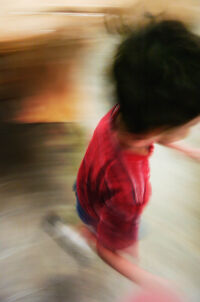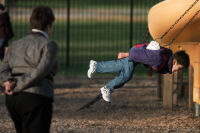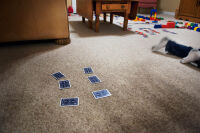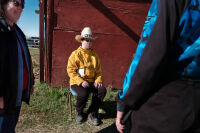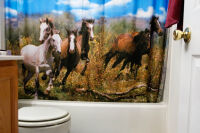What is it?
“Autistic”: a short word, often misheard as “artistic.” It’s a complicated word, one that refers to a developmental disorder, but also one that irrevocably brands its referents.
For most of us, it’s a word that inspires fear and remorse. Autism is an unknown.
Inside the Spectrum is a photo essay that shows the realities of living with autism.
It was exhibited at the Corcoran Gallery of Art’s 2006 BFA Photojournalism senior thesis show and at the World of Possibilities Disability Expo as a series of large, box-framed archival prints, and distributed as small-run self-published books of two formats.
What problem does it solve?
Autism is feared and misunderstood. I felt that its joys and struggles should be honestly depicted.
When Andrea Kramer was first told that her son, Danny, had autism, “I asked them if he would ever be able to have children, and they said ‘No.’” Yet Danny shows every sign of living a perfectly fulfilling life; he goes to public school, and talks, and reads, and plays, and has a whole lot in common with most seven-year-olds.
Clinically, autism is characterized by emotional distance, a fascination with manipulating objects, revelry in routine, and a tendency to “zone out” into an unseen world. Autism is often accompanied by delays in language development; many autistic children don’t speak.
Yet this gamut of symptoms is not clearly defined. Within a person with autism, each is present to varying degrees. Due to its breadth of symptoms and degrees, the many varieties of autism are commonly referred to as “autism spectrum disorders.”
Up to 0.6% of all American children have an autism spectrum disorder, according to the Centers for Disease Control; yet autism is still an enigma to most.
I hope to change this by showing autism by reference, through Mark Sherrett and Danny Kramer; and by showing the ways in which they have learned to live in a skeptical and unaccommodating world.
What was my role in it?
I photographed this essay. It was my senior thesis for the photojournalism program at the Corcoran College of Art + Design. I worked with local autism advocacy groups to find interesting—and interested—families. My classmates were generous with their time in helping me edit 8,900 photographs down to 11.
How does it work?
The images are treated with overdriven, saturated tones to convey how the world can feel to those on the spectrum: a world of sensations that are a little too loud, a little too bright, a little too fast.
